Saint-Jean-Pied-de-Port is one of the most important towns on the Camino de Santiago. It is the final stop for several French Camino routes, including Le Chemin du Puy, Vézelay, and Paris-Tours. At the same time, it is also the starting point of the famous Camino Francés, the most well-known route to Santiago de Compostela.
Table of contents
History of Saint Jean Pied de Port
Founded in the 12th century, the town replaced the original Saint-Jean-le-Vieux, which Richard the Lionheart destroyed. This strategic location has always been crucial for traders and pilgrims.
This destruction was part of a campaign ordered by his father, King Henry II, to punish Barons who had previously fought on the side of Richard, who had since reconciled with Henry. During this campaign, he acquired the name ‘Richard the Lionheart’.
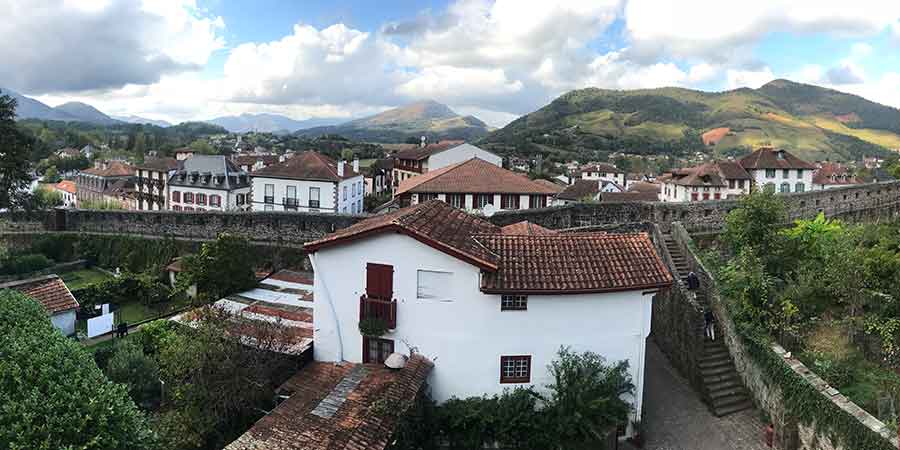
Situated strategically on a River Nive meeting and roads extending into all parts of the Basque Country, the town has always been an important place for traders and pilgrims alike.
Formerly the capital of the Basque region of Base-Navarre, St Jean Pied de Port might be small in size but has great charm. Inside the old town walls, the medieval cobbled streets are lined with beautiful and unique red and white buildings.
What to see in Saint Jean Pied de Port
1. Porte Saint Jacques
Pilgrims arriving in the town after one of the three Camino routes that end here will pass through the wonderful Porte Saint Jacques (St. James Gate). The 15th-century gate is UNESCO World Heritage-listed and sits just below the Citadelle, built in the 1700s.
2. Citadelle of Saint-Jean-Pied-de-Port
Vauban strengthened the Citadelle later in the 18th century as part of his process of strengthening the borders of France under Louis XIV. From the Citadelle, you will enjoy fantastic panoramic views of St Jean and the countryside.
3. Cobbled Streets
The cobbled Rue de la Citadelle (northside) and Rue d’Espagne (southside) both slope down to the river and are notable for their buildings with ornate wooden overhangs and balconies carved with inscriptions, designs, and religious symbols.
At House No. 9 on Rue d’Espagne, an inscription records the high price of wheat in 1789, the same year as the Storming of the Bastille.
4. Museum
On Rue de la Citadelle, you can visit the Museum, located at the 16th-century Maison des Evêques (Prison of the Bishops) which contains artefacts from the Camino.
At the bottom of the street, you will find the beautiful 14th-century church of Notre Dame du Bout du Pont (Our Lady at the End of the Bridge), made of the local pink Arradoy stone and sits beside the gateway onto the bridge over the river.
5. Ramparts of Saint-Jean-Pied-de-Port
We highly recommend that you walk along the ramparts in the footsteps of the medieval town protectors.
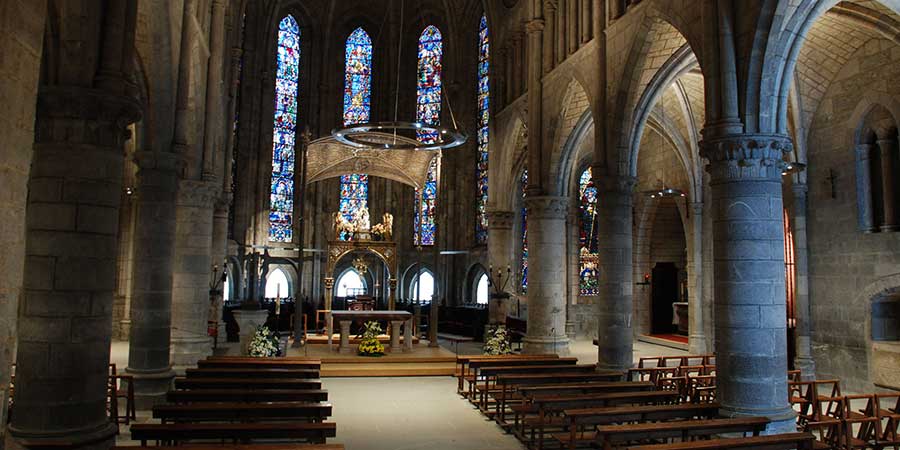
The Gastronomy of Saint Jean Pied de Port
There is a wonderful culinary tradition in this area, and some of the traditional food you may encounter includes:
- Salmais de Palombe (wood pigeon stew)
- Fromage de Brebis or Ossaultry (sheep’s cheese)
- Axoa (beef or veal dish)
- Trout (generally served ‘a la plancha’, which is a type of grilling)
- Pipérade (omelet with onions, peppers and Bayonne ham)
- Basque-style baby squid and Basque-style chicken.
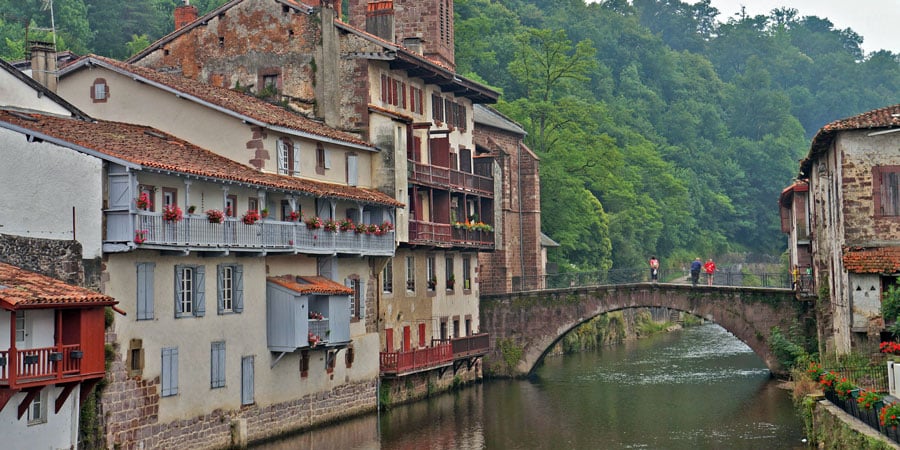
A Special Place to Begin Your Camino
Saint-Jean-Pied-de-Port is a wonderful place to begin the Camino Francés. As you walk up Rue d’Espagne, the journey feels truly real. Passing through the Porte d’Espagne, you leave the town behind and step into the adventure ahead. Pilgrims from around the world gather here to begin their walk to Santiago. There is a shared sense of excitement and connection in the air. Starting here feels like the beginning of something meaningful and unforgettable.
A Popular Pilgrimage Starting Point
Saint-Jean-Pied-de-Port is the second most popular starting point on the Camino de Santiago. Over 33,000 pilgrims begin their journey here each year. The town is set in the foothills of the French Pyrenees and is full of charm. Its cobbled streets, lively cafés, and pilgrim shops create a friendly and welcoming space. Many pilgrims say the memories made here stay with them long after they reach Santiago.
Your First Step Towards Roncesvalles
From Saint-Jean, you have two walking options to reach Roncesvalles. The Route de Napoléon crosses the high mountain pass and offers stunning views. It is best in clear weather and is not advised in winter. The Valcarlos route is lower and safer in poor conditions, with lovely scenery and quiet paths. Each path gives you a strong and beautiful start to your Camino. No matter which you choose, Saint-Jean is a place where the journey truly begins.
To learn more about walking the Camino from Saint-Jean-Pied-de-Port, visit our dedicated page. For details on other Camino de Santiago routes or to plan your trip, get in touch with our team. You can also use our Camino Planner for an instant quote and to organise your journey with ease.
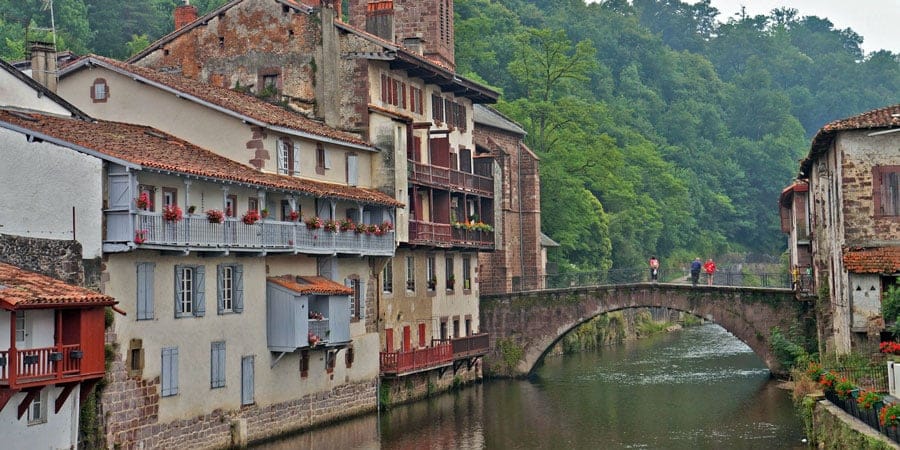

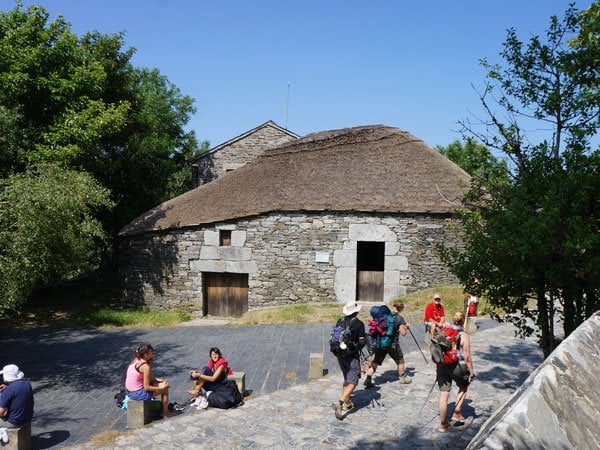

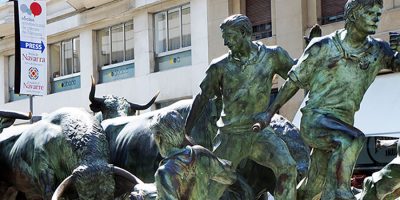


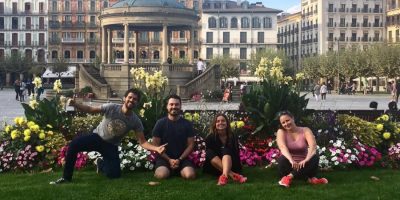
Reading your inspirational commentary has made me decide. 20 August 2024, day after my 64th birthday. French Way, here we go. Thank you for getting me over the edge!
David Bikes (very Ltd)